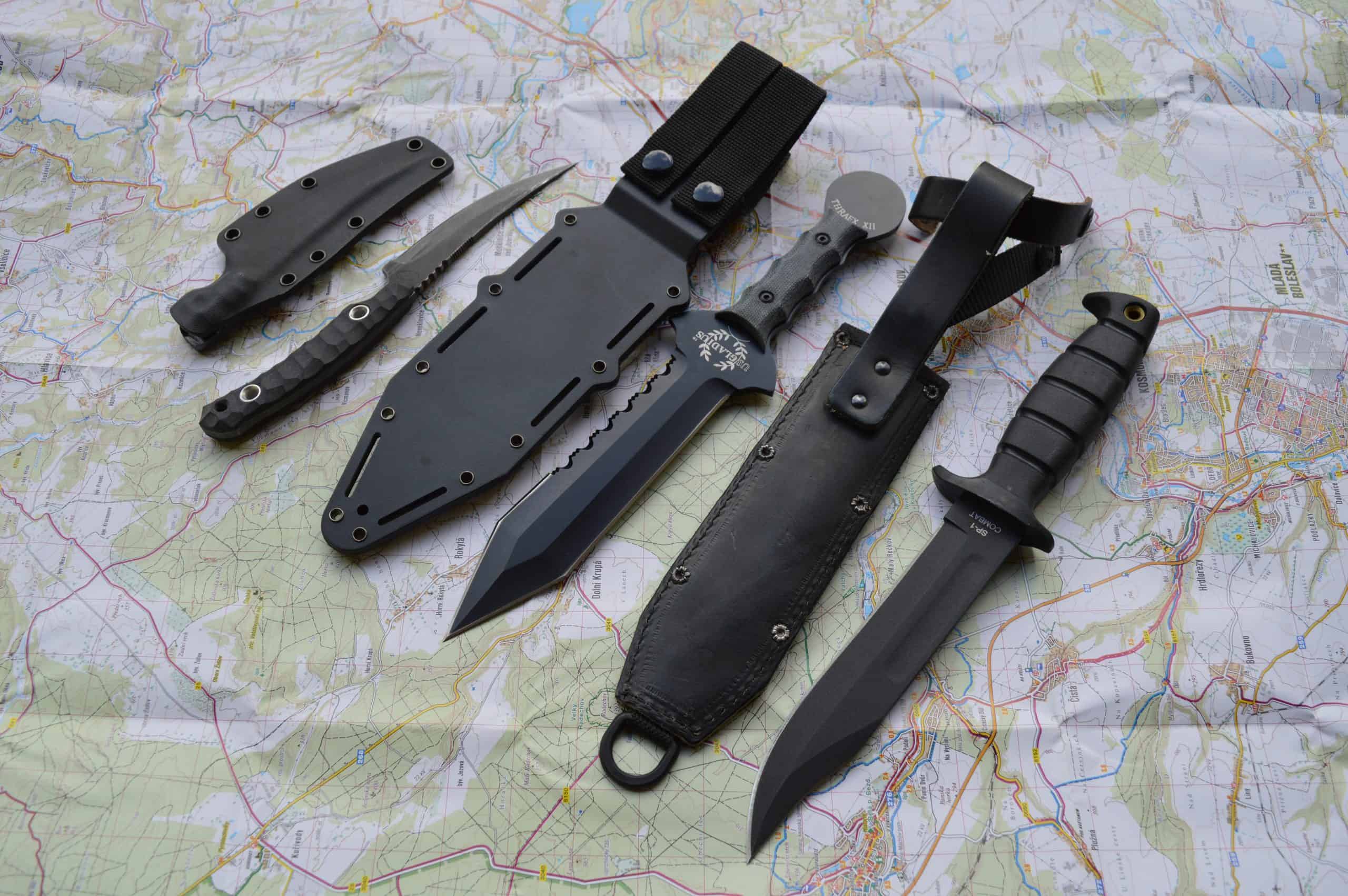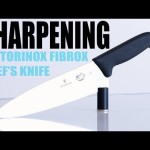
Introduction
Whittling is a type of woodworking which involves the use of a sharp knife to create shapes and designs. A whittling knife is a specialized tool designed specifically for this purpose, featuring a thin, sharp blade at its tip. To ensure safe and effective use when whittling, it’s essential that the whittling knife blade be kept properly sharpened. To do this, many people rely on leather as an effective sharpening tool. Here are some tips for how to sharpen a whittling knife with leather:
1. Start by choosing high-quality leather for your sharpening base – Look for leather with no holes or blemishes, as these can scratch or damage your blade during the sharpening process. Suede works well for this purpose, though you could also use cow hide if the former isn’t available.
2. Narrow down the best angle for your sharpening – Consider what types of wood you’ll typically be working with and choose an angle that’s optimal for cutting through them more easily. Generally speaking, angles around 25°-30° are best suited to most woods used in whittling projects.
3. Secure your leather – You can either stick small pieces of double-sided sticky tape onto both sides of your leather base or wrap paracord around it to keep it securely in place while you work on it.
4. Gently apply pressure while stroking away from yourself – When using your chosen leather base to sharpen your whittling knife’s blade, move the blade gently backward and forward without pushing too hard against the surface – but always make sure it stays in contact with the leather whilst you’re doing so. This will help you maintain control and avoid accidents caused by slipping blades!
5. Sharpen from both sides evenly until satisfied – Keep repeating steps 4 until you’re happy with the result then taking care not to grind away too much from either side of your blade – flattening out should remain relatively even across its entire surface area during each sharpenning stage .Once completed remember to clean off any visible dust that might still exist on your blade before tucking away safely for future use!
Safety
When sharpening a whittling knife with leather, it is essential to take safety seriously. Here are some tips to keep in mind:
1. Wear protective gear such as gloves and goggles before handling the blade for sharpening. Do not touch the cutting edge of the blade.
2. Work in an area that is well-lit and has good ventilation to avoid inhaling any particles while sharpening.
3. Make sure that you are working on a stable surface like a workbench or countertop that won’t move when you are applying pressure to sharpen the blade.
4. When using leather, ensure that it is free of any oil or moisture residue, as this can cause damage to the knife or cause slippage when handled.
5. Securely hold the knife handle so that you can keep a consistent angle while sharpening, particularly when using more coarse materials like sandpaper or diamond stones.
6. Once finished, store your knives out of reach from children or pets and away from flammable materials until you need them again for use or maintenance.
Gather the Supplies
In order to sharpen a whittling knife with leather, you will need:
– A sharpening stone. This stone should be both coarse and fine (1000/6000 grits) in order to provide a complete sharpening experience.
– Leather strop: Any soft leather will do, such as a piece of an old belt or a cleanser’s buff.
– Oil or water for lubrication: This is necessary for the stone, so that it has the proper amount of slip to give the blade an even edge.
– Glove: To protect your hands from any abrasions during the sharpening process.
– Knife clamp: To hold the knife steadily on the stone and strop during sharpening. The clamp needs to be strong and preferably have non slip rubber feet or clamps foam protective coating.
– Optional: If you want accessorize your honing system, you can add lapping compound and polishing compound to maximize your blade’s performance.
Prepare the Knife
Prepare the Leather – Obtain a firm piece of leather, such as a belt or an old car seat. Make sure it is about four inches longer and wider than the knife. If it has been previously conditioned, skip ahead to the next step.
Condition the Leather – If your chosen leather has never been used for sharpening, you need to condition it first. Spread petroleum jelly (Vaseline) over the leather and leave it so that it can absorb the oil overnight. This will help keep the blade from sticking while cutting into the leather.
Set Up a Working Area – Assemble an area clear of clutter with plenty of space to ensure safety and accuracy when sharpening your knife. Use newspaper as padding underneath or place a padded chopping block near your work area.
Use Angled Strokes – With medium pressure, draw your knife along the length of the leather in long strokes, ensuring that you maintain an angle between 10-15 degrees while doing so. Apply 2-3 strokes on one side before flipping over and repeating on the other side of your knife’s edge.
Check Progress – Review your progress using a loupe or microscope after every few strokes, remembering not to over sharpen each side for balance sake. Work until both sides are uniformly sharpened and not interrupting too much metal from either side of its edge
Sharpen the Knife with Leather
1. Start with a clean and dry leather piece. (Leather pieces can be purchased online or at home-goods stores in a variety of sizes, thicknesses and colors).
2. Place the knife’s blade edge against the leather, holding it at an angle of around 20 degrees.
3. Apply light pressure and draw the knife along the surface from one side to the other, away from your body and towards you in one smooth motion.
4. Repeat this step five to eight times, alternating which direction you draw the knife across the leather for each stroke (i.e., away from you then towards you).
5. Once finished, turn the knife over, keeping it perpendicular to the leather surface as before, and repeat Steps 2 through 4 three to five times on each side of the blade using both directions of stroke (i.e., away from you then towards you)
6. Finally, use gentle circular motions along either side of the blade edge five or six times until an even sharpness is achieved across its entire length
7. Clean off any residue on your knife with a soft cloth after sharpening has been completed
Sharpening Techniques
Sharpening a whittling knife with leather is easy and straightforward and the best way to maintain a sharp blade for whittling. Here are the steps for sharpening a whittling knife:
1. Begin by choosing a piece of leather that is around 4 inches wide, 8 inches long and 6 ounces in weight. It should also have some sort of modern oil finish to it.
2. Next, set your Leather Stropping Block on a flat surface like a workbench or table to give you the right foundation for sharpening the knife. You should be sure to use a stable surface so that the block doesn’t move while you’re sharpening or risk creating dull spots on your whittling knife blade.
3. Place one end of the leather on top of the block, then fold it over so that both ends meet evenly. Secure them together with two binder clips to keep them in place while stropping your knife blade against it. It’s also important that you use binder clips instead of something else because they won’t cause any damage or scarring to your blade like other materials might do.
4. Hold your whittling knife in one hand at a comfortable angle for you, then press its blade down onto the top side of the leather only lightly (fromYour Knife Center).You should never apply too much pressure when stropping because applying too much pressure causes deep scratches in both the steel used for your blades and also messes up their edge profiles – making them harder to sharpen properly in later rounds as well as dulling their cutting performance significantly faster than regular stropping does
Sharpening Tips
1. Start with a moderately coarse piece of leather and use a gentle sawing motion to sharpen the blade. Push the blade away from you as you move it up and down over the leather, repeating as necessary to create a sharpened edge. Repeat on the opposite side for even results.
2. Use your fingers or a cloth to feel your progress along the entire length of the blade after each stroke – it should have a smooth finish along its entire length, ensuring that no corners are missed.
3. If you’d like to add an extra sharp edge to your whittling knife, finish by stropping it on the backside (smooth) of the leather using long, continuous strokes till last few strokes produces black slurry (like grinding paste).
4. Once done, put some oil or wax on stropping leather and rub it for few seconds then clean it up with soft cloth for maintenance purpose to keep leather from drying out quickly and make sure its ready at all times for next use!
Finishing Up
Once you have finished sharpening your whittling knife with a piece of leather, it is important to properly clean and store it. First, check the blade for any remaining residue or particles and then use some warm soapy water to clean the blade. Make sure to dry off the blade completely before storing because moisture can cause rust. Finally, store the knife in a dry, safe place away from humidity and extreme temperatures. Make sure that if you are storing the knife in its sheath, there is no debris or dirt inside that could damage or corrode the steel. Keep an eye on how sharp the edge of your whittling knife is and sharpen regularly to ensure its longevity.
Troubleshooting
Sharpening a whittling knife using leather can be tricky, and mistakes can be common. To troubleshoot the most basic of sharpening errors, follow these steps:
1. Check your angles: One of the most common problems when sharpening with leather is that the angles of your sharpening strokes are too shallow or too steep. If you over sharpen at steeper angles, blunt edges can form on your blade. To avoid this, ensure that you press your knife down at an angle of 15-20 degrees; any steeper and the blade will become blunted and dull.
2. Examine for thinning blades: When working with leather to sharpen your whittling knife, it’s important to remember that the outer layer of metal on your blade can be quite thin when compared with honing stones. If you use too much pressure during sharpening, you risk wearing away precious layers of metal from the blade – ultimately resulting in a thinner, weaker cutting edge.
3. Sharpen both sides evenly: When using leather to sharpen a single edged knife, it’s easy to overlook how important it is to balance out sharpness across both sides of the blade. For optimum performance, ensure that each side is sharpened for equal lengths of time in order to keep balance across both edges – preventing unnecessary weight distribution within the knife as well as ensuring optimal cutting performance throughout its lifespan.
Conclusion
When sharpening a whittling knife with leather, it is important to be cautious and to use the correct technique. To sharpen safely, make sure your work surface and knife are both dry before beginning. Use light pressure when making strokes along the blade of the knife. Move the blade back-and-forth in a consistent pattern for an even edge. After about 10 minutes, stop and inspect your knife to check whether it has been sharpened correctly. Leather will give your knife a fine burnished finish which can hold its edge for more than one task. Taking the time to properly sharpen your whittling knife not only keeps you safe from accidental cuts but also helps ensuring that your carving tasks go smoothly without wearing down or dulling the blades edge quickly.















